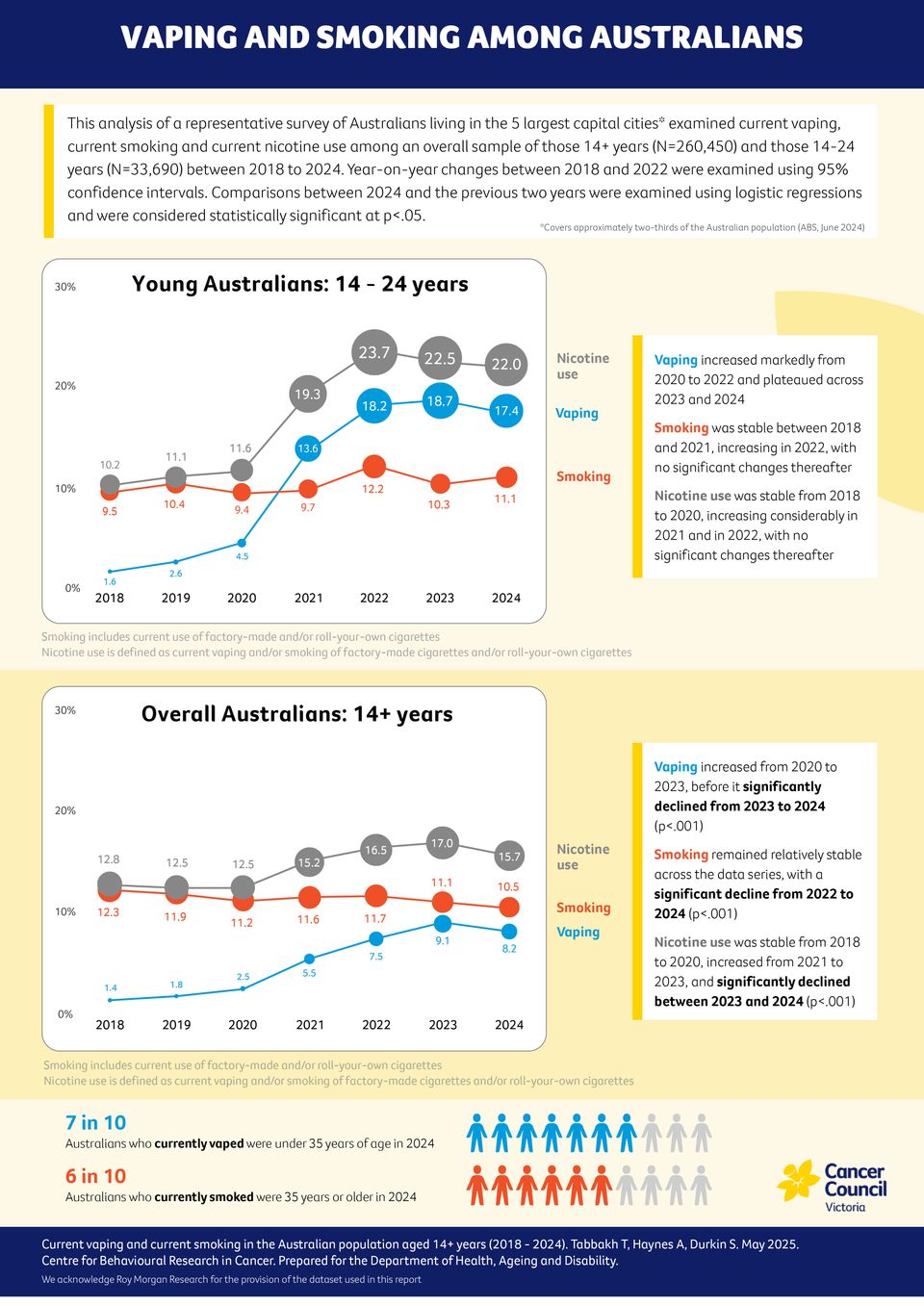Cautious optimism and calls for sustained efforts on nicotine addiction as vaping rise halts among young people
New research [1] published today looks at the prevalence of smoking, vaping and dual use by Australians aged 14 years and over, finding current vaping has plateaued among young people after sharply increasing from 2020 to its peak in 2023. Across the whole population vaping declined from 2023 (9.1%) to 2024 (8.2%). These results follow the introduction of a series of reforms that limit access to vapes in Australia since the beginning of 2024 [2].
Centre for Behavioural Research in Cancer (CBRC) at Cancer Council Victoria Director, Professor Sarah Durkin whose team undertook analysis of the data subset, said the results were something we can be cautiously optimistic about.

“It's encouraging to see that the rapid rise in vaping among young people seems to have stopped, especially since experts thought it might take years to slow it down. Smoking rates among young people in 2024 are about the same as they were in 2022, and overall, smoking rates are still going down across the whole population,” Professor Durkin said.
CBRC have been examining smoking prevalence data since 2004, with the addition of vaping data in 2018, and has a long history of carefully analysing factors that influence smoking and vaping prevalence over time.
Cancer Council Victoria CEO Todd Haper, AM said while today’s news was positive, now was not the time to become complacent.
“Decades of efforts to address nicotine addiction has taught us that we need to sustain our efforts for the longer term. These addictive tobacco and nicotine products are marketed irresponsibly by industry, and we must remain ready to counter their tactics” Mr Harper said.
Rachael Andersen, Quit Director reminded people they weren’t alone in battling addiction to smoking or vaping, and urged Australians to reach out for support.
“We know most Australians who smoke or vape want to quit. And we have the support services available through quit.org.au and Quitline (13 7848). What we have less faith in is the industry which creates nicotine products. Addicting Australians to nicotine at increasingly young ages is irresponsible, dangerous and has long-term health impacts for many,” Ms Andersen said.
“We must not take our eye off the goal of Australians being able to live their lives free from addiction to nicotine” Mr Harper concluded.
References
[1] The data is supplied by Roy Morgan’s omnibus survey and provides population-representative samples from Australia’s five most populous cities.
[2] www.roymorgan.com/findings/9936-cigarette-smoking-in-australia-press-release shows similar pattern of findings shown in CCV analysis.
